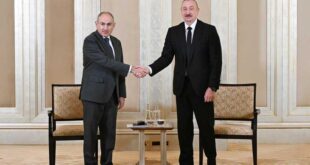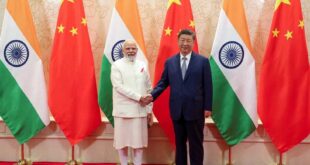In the August 18 meeting between European leaders, Ukraine, and the United States, multiple officials stressed the importance of security guarantees for Ukraine that were Article V–like. These guarantees, especially in the absence of a ceasefire to support negotiations, would need to include foreign troops and monitors on the ground in Ukraine. This dramatic shift in the conflict begs the question: What will this multinational peacekeeping force look like?
Q1: How big should the ground forces be?
A1: Large. In previous research, CSIS Futures Lab used the size of past missions to approximate the required size of an international force capable of successfully securing peace in Ukraine. Using past missions and troop density estimates (number of soldiers per square kilometer), the smallest the force could be is around 6,000 military and civilian personnel, constituting a ceasefire monitoring mission—a UN stable.
The more realistic number to ensure sufficient ground forces capable of implementing a true defense-in-depth could be over 100,000 and comparable to the size of the full active forces of countries such as Greece or Spain. On the low end, that means adding—in addition to over 100 Ukrainian brigades—a multinational corps (i.e., two to five brigades, or 10,000–25,000 soldiers). On the high end, there would be multiple corps and specialized training commands.
The size difference is a function of the mission. Is the force a deterrent trip wire that focuses on training Ukrainian forces while giving Russia pause, or is it sufficiently large to help blunt a future Russian offensive while Ukraine mobilizes reserve forces? What is clear is that a true security guarantee must be larger than a small ceasefire monitoring mission. The goal is not to match Russia tank-for-tank, but to create a formidable deterrent that raises the cost of any future invasion to an unacceptable level. This force structure would allow Ukraine to guard its extensive frontier while maintaining a strategic reserve capable of responding to breakthroughs and launching counterattacks.
At the same time, the size of the force will prove challenging to European states alone, who lack the personnel for a large, protracted deployment. This means European states, which largely helped Kyiv convince the United States to stay the course, may need to seek a broader international mandate to pull in forces from non-EU states.
Q2: What should the air contributions look like?
A2: There will need to be enough fighter and support aircraft, as well as integrated air and missile defense sites, to deny Moscow air superiority. Like with the ground forces, this requirement means the air force will have to be much larger than existing NATO air policingmissions. It also means that countries contributing personnel, many of whom will again be European states, will find their air forces stretched and incur readiness costs.
In previous studies, CSIS Futures Lab estimated that this force would need to be at least 40 aircraft strong and could grow to as large as 160 aircraft. Ukraine is a big country, roughly the size of the U.S. state of Texas, which means there are multiple sectors that defensive counterair patrols would need to cover. Furthermore, there would need to be fighters on strip alert, and over time, maintenance rates would push sortie generation down. Yes, Ukraine has a growing air force, but it would need to be augmented with foreign aircraft and, especially support packages like refueling and airborne command and control. These capabilities would provide a deterrent to Russia. They could even be used to buy down the risk of deploying a smaller ground force focused more on training. At a minimum, the air forces would need to be integrated with Ukraine’s deep air defense capability.
Q3: Will naval forces be involved?
A3: Yes, but not in the traditional sense of a blue-water navy. The Black Sea remains a critical theater, and securing Ukraine’s access to maritime commerce is a vital economic interest. But these effects can be achieved by augmenting Ukraine’s existing approach to sea denial.
In previous studies, CSIS Futures Lab outlined a naval force package that took into consideration legal constraints like the Montreux Convention, which limits warships to a 21-day duration and reduced tonnage. Instead of attempting to build a fleet to challenge Russia’s directly, the focus should be on making the northwestern Black Sea a no-go zone for the Russian Navy. This can be achieved with a combination of land-based anti-ship cruise missiles, a large inventory of naval drones (both surface and subsurface), and a smaller flotilla of agile patrol craft from Black Sea NATO member states. This force would be supported by maritime patrol aircraft and even contracted maritime domain awareness capabilities, including planes to satellites. This approach denies Russia the ability to blockade Ukrainian ports such as Odesa and allows Ukraine to protect its sea lines of communication at a fraction of the cost of a traditional fleet. In all likelihood, this force would be smaller in terms of personnel and less resource-intensive than the air and ground force requirements discussed above.
Q4: What other forces will be needed to secure the peace?
A4: Modern warfare is multi-domain, and a durable peace will require capabilities that transcend the traditional land, sea, and air environments. Previous studies by CSIS Futures Lab on Ukraine suggest that there will need to be robust space and cyber capabilities aligned with any security guarantee.
First, the force will need resilient space-based assets for intelligence, surveillance, reconnaissance (ISR), and communications. These assets will ensure that Ukraine can see the battlefield clearly and communicate securely, even if terrestrial networks are disrupted. Requirements will include access to commercial satellite imagery and secure satellite communication terminals.
Second, robust cyber defense is non-negotiable. Russia will continue to use cyberattacks to disrupt critical infrastructure, sow discord, and undermine Ukraine’s government. A security guarantee must include assistance in hardening Ukraine’s digital infrastructure and the critical sectors Moscow could target short of war to coerce Kyiv.
Q5: How long will the mission last?
A5: This is not a short-term mission; it is a generational commitment. The goal of a security guarantee is to build a Ukrainian military that is so strong, well-equipped, and well-trained that Russia is permanently deterred from future aggression. This will require a sustained effort that will likely last at least a decade in its most intensive phase of building and training the force.
However, the security guarantee itself must be indefinite. It represents a fundamental shift in Ukraine’s strategic posture by integrating it into the Western security architecture. The mission’s timeline should be measured not in years, but in the achievement of a strategic objective: a secure, sovereign, and stable Ukraine capable of defending itself for the long term. A prudent planning assumption for Ukraine is a 5–10 year baseline mandate with a 36-month review, acknowledging that a demilitarized zone (DMZ) or monitoring footprint could endure far longer if the political settlement stalls.
The Bottom Line
A true security guarantee for Ukraine cannot be a paper promise. It must be a concrete, multi-domain, and long-term commitment to building a formidable Ukrainian defense force. Drawing on the detailed analysis from the Strategic Headwinds series, a secure peace requires a large, defensively postured army, a modern air force capable of defending the skies, a naval strategy focused on sea denial, and cutting-edge capabilities in space and cyberspace. Building this force is the only way to ensure that a ceasefire becomes the foundation for a lasting peace, not just a pause before the next war.
Benjamin Jensen is the director of the Futures Lab at the Center for Strategic and International Studies in Washington, D.C.
 Geostrategic Media Political Commentary, Analysis, Security, Defense
Geostrategic Media Political Commentary, Analysis, Security, Defense





